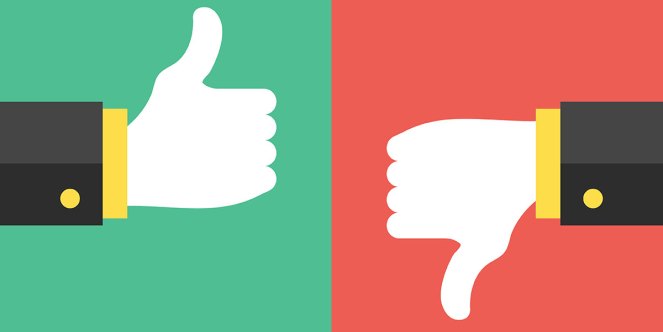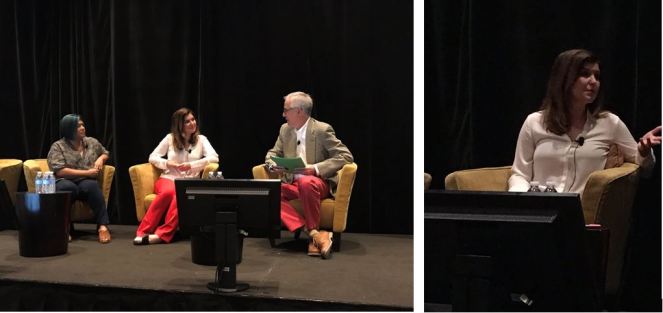 [This post was originally created for and partially posted on the Social Media Explorer blog on August 14, 2017]
[This post was originally created for and partially posted on the Social Media Explorer blog on August 14, 2017]
How do the big three social platforms stack up from a personal and professional standpoint? Facebook, LinkedIn, and Twitter all have strengths and weaknesses.
FACEBOOK:
Strength: Facebook’s super power is in its ability to keep me in contact with my weak connections. I can peek at former classmates’ struggles with parenthood or find a layover lunch buddy in cities my former coworkers have scattered to. People don’t vanish from your life anymore.
For marketers, the Facebook database is huge, offers great targeting (with some weakness in the area of job titles), and some of the best ROI across advertising options.
Weakness: If my newsfeed offered an actual distillation of the coolest events in my friends’ lives, I’d be glued. One could blame the ad-focused algorithm but sometimes the ads are better targeted to me than the rest of the content. The truth is, my friends and I don’t always agree on what is post-worthy and the “boring” bits dilute the value of my news feed.
Opportunity: Introducing post tagging would allow me to remove politics entirely from my feed, making it a much happier and more engaging place. Taggable topics could include: life event, celebration, baby pics, pet pics, travel, and sports. Bonus points if Facebook pre-selects the most likely tag for you when you post.

_____________________________________________________________________________________
LINKEDIN:
Strength: I often find my LinkedIn newsfeed more interesting than my Facebook newsfeed. The professional nature of the platform results in a lot of social cooling, but what I lose in personal stories I gain in the relevancy of links shared. Additional post tagging/filtering options would be helpful, such as work anniversary, job opportunity, job seeker, case study, etc.
As a B2B marketer, LinkedIn is a power house. Facebook may be cheaper, but you are not able to effectively drill down to audiences like “medical C-suite.” LinkedIn offers the best job title targeting – essential for B2B campaigns. InMail is particularly effective – though a bit more expensive – especially if it comes from an executive as opposed to a brand.
Weakness: LinkedIn is late to the game with native video/gif support, which is still not available on all company pages. Ad options in general lack the variety of other social platforms (where polls, and interactive elements are the norm). Lead gen forms lack the ability to add new fields making it hard to qualify leads. The LinkedIn Pulse news feature is still not well integrated into the user experience and the limit of 2-3 influencers per company seems a bit arbitrary.
Opportunity: Leverage user data into a dating site or a lunch roulette with nearby professionals in your field.

_____________________________________________________________________________________
TWITTER:
Strength: Twitter’s superpower is it allows conversation between everyone on a level  playing field. Idealistically, I want it to aspire to become “the free nets” envisioned in the book “Ender’s game,” in which social media empowers a meritocracy of ideas. Twitter has also made strides in positioning itself as a customer service tool. 82% of users engage with brands on twitter and 42% expect brands to be on twitter vs only a 34% expectation of brands to be on other social platforms.
playing field. Idealistically, I want it to aspire to become “the free nets” envisioned in the book “Ender’s game,” in which social media empowers a meritocracy of ideas. Twitter has also made strides in positioning itself as a customer service tool. 82% of users engage with brands on twitter and 42% expect brands to be on twitter vs only a 34% expectation of brands to be on other social platforms.
Weakness: Twitter’s problem isn’t really monetization, but rather user growth. Users want new innovations. Twitter’s corporate vision is to allow third parties to cover non-core offerings, but third parties aren’t taking the risk that Twitter may then re-develop innovations in house – putting them out of business.
Opportunity: Leverage the democratic design of twitter conversations:
- Get local: Nextdoor has demonstrated the passion people feel around connecting with their neighborhoods and learning what is happening nearby. Twitter could add a lot to the experience by leveraging geotargeting to offer drill down to local conversation around events, the sharing economy, and gamification (e.g. the search and sharing of “secret shows” at music festivals).
- Organize the conversation: Advanced search is a good start. Hashtags should be leveraged into sli.do-esque tweetchat room experiences that make it easy to form groups and participate in conversations.
- Customer service support: Several newer features that make it easier and faster for customers and care teams to connect include removing DM character limits, the easy click message button on brand profiles, direct message deep links and quick replies. This success story could be touted more widely. When potential users ask “why Twitter?” a top of mind answer should be “because it’s the fastest/best way to get brands to solve my problems.”
- Targeting: Paid marketing with Twitter is challenging due to the lack of targeting options (which reduces ROI) and a poorly integrated, unintuitive suite of options. Facebook offers the big database, great targeting, and some of the best ROI. LinkedIn offers the best job title targeting – essential for B2B campaigns. Twitter only offers targeting based on tweeting behaviors (interests, extrapolated demographics, similar accounts, etc.) One solution is to allow profiles to be more robust and targetable. And all that public data about users’ interests could also fuel a new iteration of Klout Perks.
- Multiple handle management: Brands want to offer an integrated destination on social platforms, while at the same time offering personalized experiences for specific countries, products, and stores. An “integrated subhandles” design similar to Facebook Global pages would allow personalized timelines to be displayed on relevant company webpages.
These ideas will be challenging to bring to life. Beyond the technical issues, there are issues of privacy, free speech, and public safety to consider. Twitter’s future rests on its ability to grasp the powerful opportunities currently being left on the table.
Each social channel is catered to different parts of life and encourages different content. Not a lot of people would share business content on Facebook, Instagram, or Snapchat, but they would do so on LinkedIn or Twitter. Conversely, those personal wedding pictures are best kept off LinkedIn.